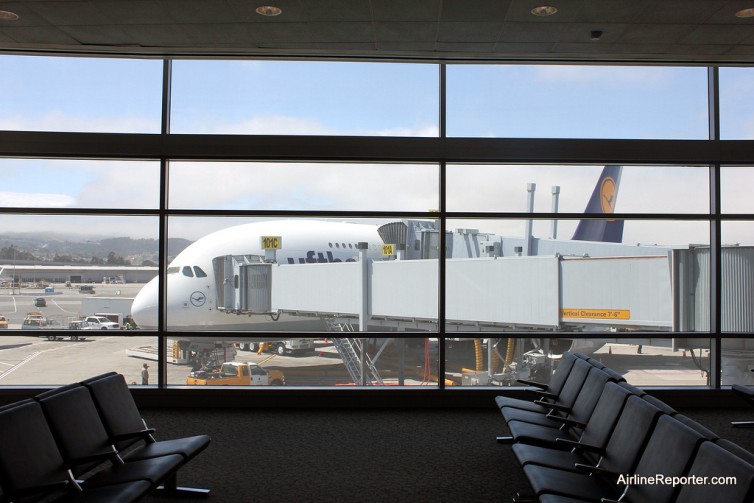
A Lufthansa Airbus A380 at SFO
Traveling from the Bay Area to Europe? Chances are you may find yourself on the Star Alliance trunk route from SFO to Frankfurt. I did recently as I kicked off a trip to Germany, India, and Southeast Asia, celebrating my final few months of freedom between a journalism job and medical school. In my experience, flying to Lufthansa’s ’œFraport’ mega-hub from San Francisco generally meant a trip on United’s venerable ’“ and noticeably aging ’“ 747-400s. While they are beautiful birds from the outside, they don’t make for the best long-haul economy class flights: no seatback screens, no power outlets (although that has since been corrected), and cramped seats, unless you can bump up to Economy Plus or better. Interested in something new, I leapt at the chance to try out Lufthansa’s A380 flight on the same route.
I was glad to be able to book the flight on United ticket stock (ticket number beginning with ’œ016’), which meant I earned both premier qualifying miles (PQMs) and dollars (PQDs) for the flight. With the current UA premier qualifying system, you earn PQMs when you book non-UA ticket stock with Star Alliance partners, but not the PQDs – which are needed for elite qualification.
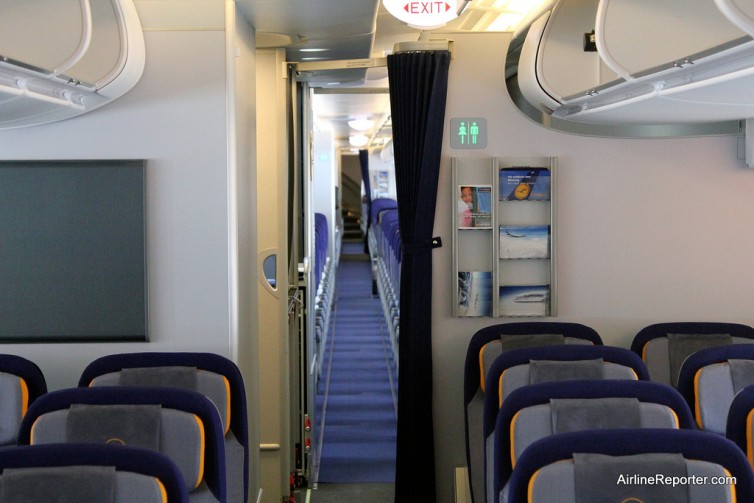
Heading to the back of the plane, to then go upstairs
Curiously, the confirmation code United provided me allowed me to manage my reservation on Lufthansa’s website, but did not work for online check-in. I found a Lufthansa-specific code buried in a separate email. A bit confusing, but not a huge deal. One downside of booking a Lufthansa-operated flight through United is that you are not always able to pick a seat in advance. That ended up being the case for this flight, and I was dreading the possibility of a back-of-the-bus middle seat. Luckily, seat availability was still good when I checked in online, even though the flight ended up being full.
I had only flown the A380 once before (on Emirates) and assumed that the upper deck was first and business class only. To my surprise, there was an ’œupper deck’ tab on the seat selection window during online check-in. It turns out that on Lufthansa’s newest layout for some of its A380s, there is a premium economy section in the front of the lower deck and a small section ’“ five rows, to be exact ’“ of standard economy at the back of the upper deck. I snagged a window seat at the front of the latter section, thrilled that I would finally get upper-deck bragging rights (though without the usual business class accouterments that usually go with it).

Somehow understated, but an amazing and easy to find mark in any airport – Photo: Bernie Leighton | AirlineReporter
I seem to live in airport lounges these days. I’ve noticed a theme, especially within the United States. The concept of luxury, decadence, and modernity have been eschewed by small packs of American cheese, rubbery cookies, and buy-your-own ill-textured food provided by Sysco. On top of that, the lounges are usually dirty. The showers feel more “grandmother’s basement” than luxury. In the case of one overseas lounge, it cannot pass a health inspection to save its life!
Etihad Airways has had great lounges in the past, but now again succeeds with the introduction of Facets of Abu Dhabi brand. Etihad knew they had to not just lead, but cement that lead, as best in all classes. To be fair though, the older-style Etihad lounges are starting to merely be the best, not years beyond the competition.
That said, according to Calum Laming, Etihad’s Vice President of Guest Experience, what they came up with is really not a mere lounge.
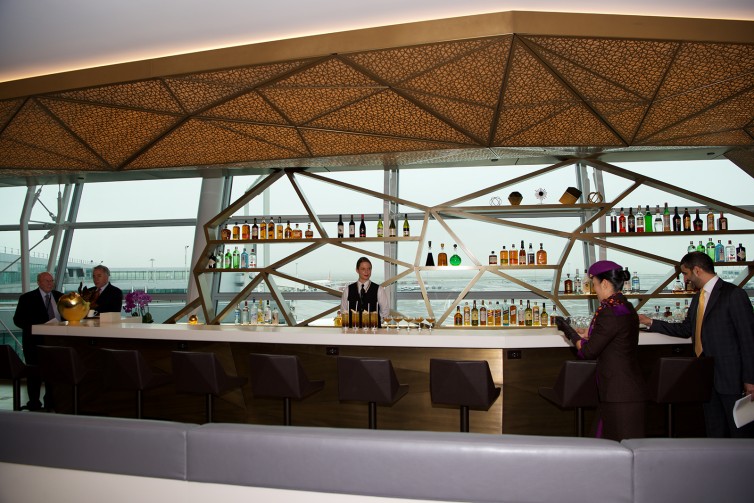
The bar is the central fixture of the new Etihad JFK lounge. It’s truly beautiful. – Photo: Bernie Leighton | AirlineReporter
He is right.
Imagine if you could, with the help of an airport facility design firm called Gensler (they do shopping malls as well), create something inside an airport that felt nothing like it, save for the spectacular ramp view?
Well, they did it. I knew, previously, that Etihad takes its design cues from Fairmont hotels. Except when you step into the lobby of this lounge, it feels as if you have left JFK; teleported to Vancouver, and walked into the Fairmont Pacific Rim hotel.
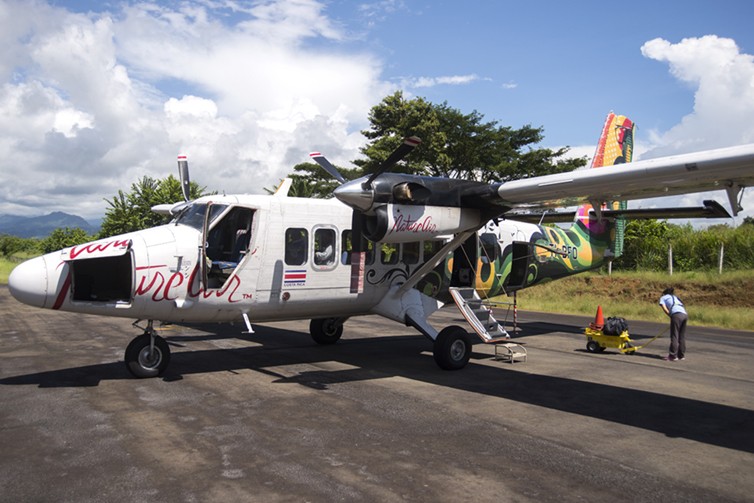
A Nature Air De Havilland Canada DHC-6-300 Twin Otter/VistaLiner at La Managua Airport, Quepos, Costa Rica – Photo: Daniel T Jones
It is easy to find travel sites touting Costa Rica as the new Hawaii for tropical vacation destinations. I had intended to test this theory for some time, and see some sloths and monkeys in the process. Having found a discount fare for my girlfriend and me from Tijuana to San Jos via Guadalajara, my AvGeek/travel skills were put to use to figure out how to get from the Costa Rican capital of San Jos to our intended destination, the Pacific coast town of Quepos.
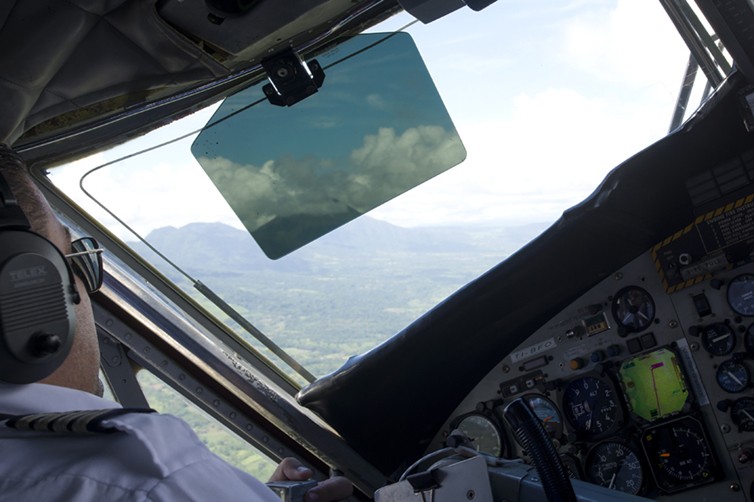
A nice view of Volcán Arenal through the captain’s sun visor – Photo: Daniel T Jones
NATURE AIR: Background & Aircraft
Ten seconds of Googling later, it was readily apparent that roads, road travel, car rentals, and long distance bus service in the country were less than ideal. Not expecting to find many other options, as Costa Rica is a very small country (roughly 80% the size of West Virginia), I was pleasantly surprised to find not one, but two, choices for domestic air travel in the region. SANSA Airlines (Servicios Areos Nacionales S.A.) operates a fleet of eight Cessna 208B Grand Caravans from its hub at Juan Santamaràa International Airport (SJO/MROC). As nice as a ride in a C208 sounds, I decided to go with SANSA’s main competitor, Nature Air.
I chose Nature Air for a few reasons, the most important being that they fly the De Havilland Canada DHC-6 Twin Otter 300, as well as a few Cessna 208Bs – but more on their fleet later. Specifically, they operate the ’œVistaLiner’ model, with oversized windows. As if that weren’t enough to choose them, they have some of the most amazing aircraft liveries you’ll ever see!
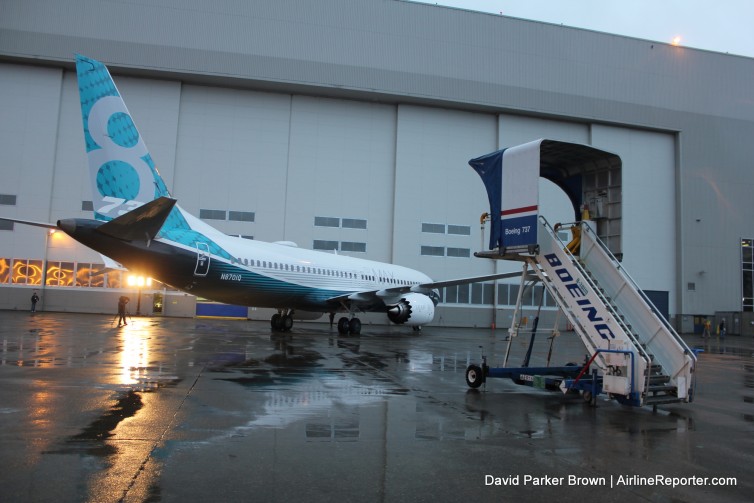
The past and future meet – the old 737 livery on the stairs and the the MAX’s new livery on the jet
This week, Boeing took the time to not only show off their improved production line for the 737 MAX, but also the first (and second) aircraft. Over two days, AirlineReporter visited Boeing’s 737’s factory in Renton, Wa to learn more about the 737 MAX and how Boeing will go about producing them.
The MAX is the fourth generation of the venerable 737 and will replace the 737 Next Generation (or 737 NG). The first 737 first flew in April 1967 and, although it might have the same name and a similar appearance, the aircraft has changed dramatically over the years.
The MAX will come in three main flavors: the MAX 7, MAX 8, and (wait for it) MAX 9. I have to say that it’s a bit weird to have the “MAX” [aka maximum] with a 7, but then also an 8 and 9? Oh well.
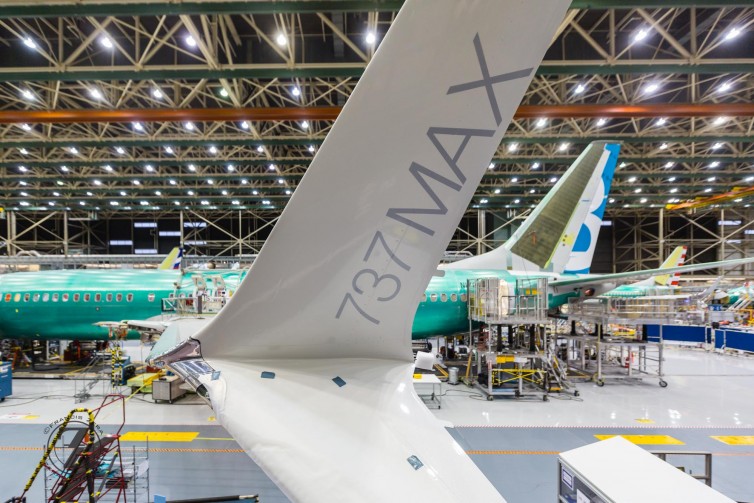
Boeing’s new Advanced Technology winglets are a distinctive feature of the 737 MAX.
The number of passengers in each respective version of the aircraft will be similar to the 737 NGs. The MAX 7 will carry 126 to 149 passengers, the MAX 8 will carry 162 to 200 (with the MAX 200 for Ryanair), and the MAX 9 will have 180 to 220. These changes are taking the 737 frame, technology, and cost savings… well… to the MAX!
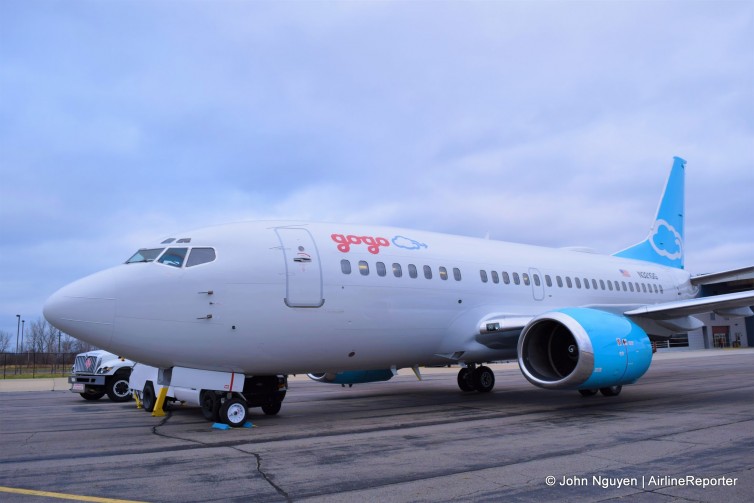
Gogo’s testbed, a Boeing 737-500 (reg. no. N321GG) dubbed the “Jimmy Ray”
You might have heard of Gogo, that company that lets you check Facebook watch Youtube be productive while you’re 30,000 feet in the air. And you might have been one of those who sighed loudly when your cat video kept pausing and buffering.
From the power user traveling for work, to the new user who will update their status to, “I’m posting this from the plane!”, most can agree that data speeds inflight are nowhere near what we’re used to on the ground. We take connectivity on land for granted, but in the air the concept is still novel and exciting (before it disappoints us multiple times with the infinite spinning “Loading…” circle).

An #AvGeek testing Gogo’s speed
Gogo wants you to have really, really fast Internet, and they invited AirlineReporter to come check out their new headquarters in Chicago’s Loop, as well as to experience their test bed in action (or in #AvGeek-speak, fly on their private, tricked out Boeing 737-500). Can Internet access actually get better, and what does it mean for the regular passenger?









